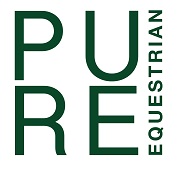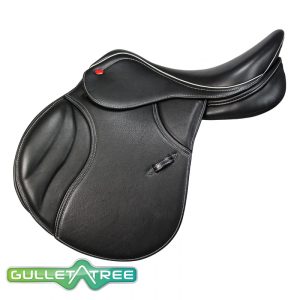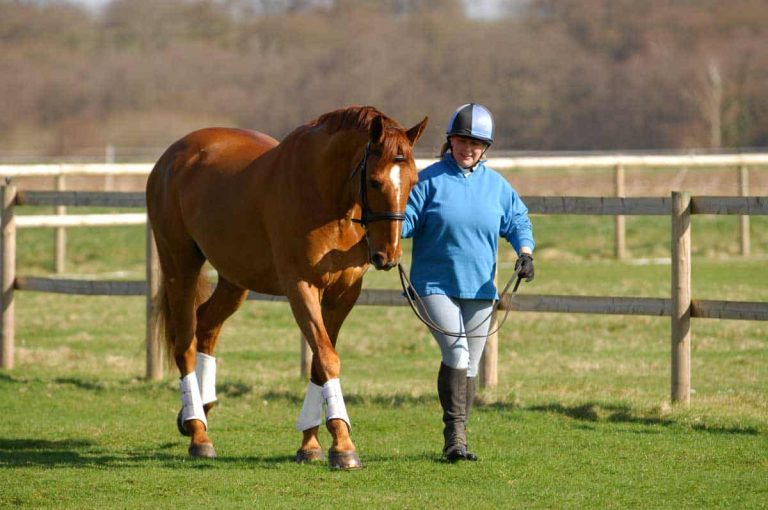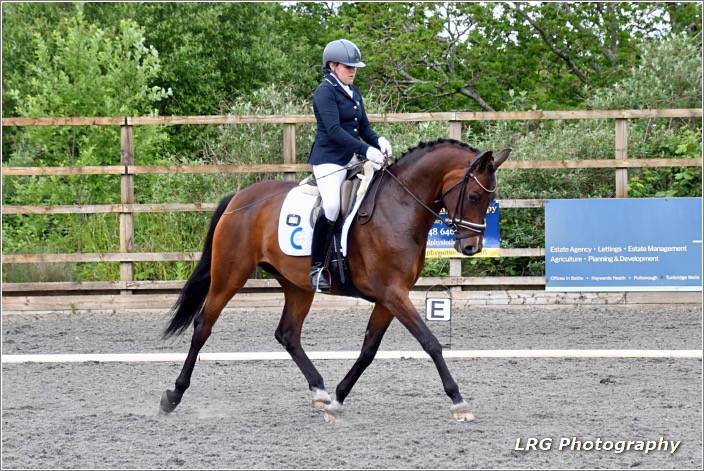If you’re a horse lover or an aspiring rider, you may have found yourself pondering over the daunting task of choosing the perfect saddle for your noble companion. How do you even begin to navigate the vast array of options? Fear not, for in this article, we will shed light on this very question. From considering your riding style to understanding your horse’s anatomy, we will explore the key factors that come into play when selecting the right saddle for your equine partner. So, saddle up and let’s embark on this exciting journey together!
Table of Contents
ToggleConsider the Horse’s Breed and Conformation
When choosing the right saddle for your horse, it’s important to consider their breed and conformation. Each breed has its own unique characteristics and requirements, so it’s essential to evaluate these factors before making a decision.
Evaluate the Breed Characteristics
Start by researching the characteristics of your horse’s breed. Different breeds have specific traits that can influence the type of saddle that will suit them best. For example, certain breeds may have a shorter back or a higher wither, requiring a saddle with specific features to accommodate their conformation. Understand your horse’s breed characteristics to narrow down your options.
Assess the Horse’s Conformation
Next, assess your horse’s conformation. This refers to their physical build and structure. Take note of their back length, wither height, and overall body shape. It’s important to find a saddle that fits your horse’s conformation properly to ensure their comfort and prevent any potential issues. If you’re unsure about assessing your horse’s conformation, consider consulting a professional for guidance.
Consider the Horse’s Body Shape and Size
In addition to breed characteristics and conformation, the horse’s body shape and size are crucial factors to consider. Horses come in various shapes and sizes, and each may require a slightly different saddle fit. Take careful measurements of your horse’s back length, shoulder width, and girth circumference. This information will help you choose a saddle that provides the proper support and clearance for your horse’s body.
Determine the Discipline or Purpose
Understanding the specific discipline or purpose for which you will be using the saddle is essential in making the right choice. Different disciplines have different saddle requirements, so it’s crucial to identify the primary discipline for your horse.
Identify the Primary Discipline
Consider the primary role your horse will play, whether it be dressage, jumping, trail riding, or any other discipline. Each discipline has specific saddle designs and features tailored for optimum performance in that particular activity. Research the saddle requirements for your horse’s primary discipline and focus on finding a saddle that fulfils those needs.
Consider the Secondary Disciplines
While identifying the primary discipline is important, it’s also beneficial to consider any secondary disciplines your horse might participate in. If your horse engages in multiple activities, such as dressage and trail riding, you’ll want to find a versatile saddle that can accommodate both disciplines. Look for saddles that offer a balance of features suitable for each of the secondary disciplines.
Evaluate the Specific Requirements
Every discipline has its own specific requirements for the rider and the horse. Consider the specific demands of your chosen discipline and ensure that the saddle you choose meets those requirements. For example, dressage saddles have a deep seat and long billets to encourage proper alignment and position, while jumping saddles have forward-cut flaps and a more open seat for better balance over jumps.
Understand the Different Saddle Types
To choose the right saddle, it’s essential to understand the different types available and their specific features. Here are some of the most common saddle types:
English Saddles
English saddles are designed for disciplines like dressage, jumping, and eventing. They have a close-contact design, a forward-cut flap, and generally lack the horn found on western saddles. They offer a deeper seat for stability and better communication between horse and rider.
Western Saddles
Western saddles are commonly used for western riding disciplines, such as trail riding and working cattle. They have a deep seat, a horn in the front for holding onto, and a larger skirt for increased rider stability and support. Their design provides comfort for long hours of riding.
Australian Stock Saddles
Australian stock saddles are a hybrid between English and Western saddles. They are often used for working with livestock and endurance riding. These saddles have a deep seat, knee pads, and a horn like western saddles, but also offer a closer contact feel similar to English saddles.
Endurance Saddles
Designed for endurance riding, these saddles prioritise long-distance comfort and weight distribution. They typically have a lightweight construction, extra padding, and plenty of d-rings for attaching gear. Endurance saddles often have a flatter seat and can accommodate various horse breeds and sizes.
Dressage Saddles
Dressage saddles are specifically designed for the discipline of dressage, which focuses on precise movements and harmony between horse and rider. These saddles feature a deep seat, long and straight flaps, and extended billets to encourage proper leg positioning and alignment.
Jumping Saddles
Used in show jumping and eventing, jumping saddles are designed to allow for freedom of movement and balance over jumps. They have a forward-cut flap that enables the rider to have a shorter stirrup length, while the saddle’s construction facilitates a more secure seat during jumping efforts.
All-Purpose Saddles
All-purpose saddles, as the name suggests, are versatile and suitable for a variety of riding disciplines. They often have a moderate seat depth and a slightly forward flap, making them suitable for both flatwork and jumping. All-purpose saddles are a popular choice for riders who participate in multiple disciplines.
Understanding the different saddle types will allow you to choose the one that best aligns with your horse’s intended use and your riding goals.
Consider the Rider’s Experience and Skill Level
Your own experience and skill level as a rider should also factor into the equation when selecting a saddle. The right saddle should support your riding style and provide the necessary level of comfort and security.
Identify the Rider’s Level of Experience
Consider your level of experience as a rider. Are you a beginner, intermediate, or advanced rider? Different skill levels require different features in a saddle. For beginners, a saddle with a deeper seat and more security might be beneficial, while advanced riders may prefer a flatter seat for greater freedom of movement.
Assess the Rider’s Skills and Riding Style
Evaluate your riding style and the specific skills you possess. Are you primarily an English rider or a Western rider? Are you more focused on dressage, jumping, or trail riding? Understanding your own riding style will help you determine the saddle type and design that will enhance and support your skills.
Consider the Rider’s Physical Attributes
Take into account your physical attributes as a rider. Your body shape, height, and leg length can affect the fit and comfort of a saddle. Some saddles come in different sizes or offer adjustable features to accommodate various rider body types. It’s important to choose a saddle that provides proper support and allows for correct alignment of your body while riding.
Take into Account the Horse’s Comfort
The comfort of your horse is of utmost importance. A well-fitting saddle will prevent discomfort, pain, and potential long-term issues. Here’s what you need to consider regarding your horse’s comfort:
Evaluate the Horse’s Back and Spine
A properly fitting saddle should conform to the shape of your horse’s back and spine. Assess the curvature of their back and the overall condition of the spine. It’s important to avoid saddles that create pressure points or restrict the horse’s movement. Look for a saddle that provides adequate clearance over the withers and spine and distributes the rider’s weight evenly across the horse’s back.
Check for Proper Padding and Cushioning
Ensure that the saddle has sufficient padding and cushioning to provide comfort and shock absorption for your horse. The padding should be evenly distributed and not create any pressure points. Consider the thickness and materials used in the saddle’s padding to determine if it will meet your horse’s comfort needs.
Consider the Horse’s Movement and Flexibility
Observe your horse’s natural movement and flexibility. A well-fitting saddle should not restrict their range of motion or hinder their ability to perform. Take note of any signs of discomfort during movement, such as pinned ears, head-tossing, or reluctance to engage. A saddle that allows freedom of movement will contribute to your horse’s overall comfort and performance.
Fit the Saddle Properly
Achieving the correct fit is crucial for both the horse and the rider. A properly fitted saddle ensures comfort and stability for the rider and supports the horse’s well-being. Follow these steps to fit the saddle properly:
Measure the Horse’s Back and Withers
Take accurate measurements of your horse’s back and withers to ensure you choose the right size and style of saddle. Measure the back length, wither height, and girth circumference. These measurements will help you find a saddle that fits your horse’s body properly.
Check the Gullet Width and Clearance
Inspect the gullet width and clearance. The gullet is the channel running down the length of the saddle’s underside, providing clearance for the horse’s spine. Ensure that the gullet width is wide enough to avoid pinching or rubbing against the horse’s back. Additionally, make sure there is adequate clearance between the gullet and the withers to prevent any discomfort or pressure points.
Assess the Panel Shape and Length
Consider the panel shape and length in relation to your horse’s back. Panels are the padded sections underneath the saddle that come into direct contact with the horse’s back. The shape and length of the panels should closely match your horse’s back to provide even weight distribution and avoid pressure points. Different horses require different panel designs, so choose the one that suits your horse’s body shape.
Ensure Proper Balance and Stability
A well-balanced saddle is essential for both the rider and the horse. Test the saddle’s balance by placing it on your horse’s back without a pad or blanket. It should sit evenly and not tip forward or backward. A balanced saddle ensures stability and allows the rider to maintain a centreed position. Verify that the saddle’s construction and design support this balance throughout various riding activities.
Consider the Material and Construction
The material and construction of a saddle greatly impact its durability, comfort, and overall quality. Consider the following factors when assessing the material and construction of a saddle:
Evaluate the Material Quality and Durability
The material used in the construction of a saddle should be of high quality and durability. Common materials include leather, synthetic materials, or a combination of both. Leather saddles are typically preferred for their durability and ability to mould to the horse’s shape over time. Synthetic materials offer easy maintenance and affordability. Consider your preferences and the expected usage of the saddle when selecting the material.
Assess the Type of Tree and Rigging
The tree is the frame of the saddle that provides structure and support. It’s important to choose a saddle with a tree that suits your horse’s back shape and provides proper weight distribution. Trees can be made of wood, metal, or synthetic materials. Additionally, assess the rigging, which is the system of straps and rings that secure the saddle to the horse. Ensure that the rigging is strong, reliable, and fits your horse comfortably.
Consider the Stitching and Reinforcement
Examine the stitching and reinforcement of the saddle. High-quality saddles will feature strong and precise stitching that can withstand the demands of riding. Check for reinforcing patches or extra layers of material in areas that undergo the most stress, such as the billet straps or stirrup bar attachments. Attention to detail and quality construction ensure the longevity and durability of the saddle.
Try Before You Buy
Before making a final decision, it’s crucial to try the saddle on both your horse and yourself. This will allow you to assess comfort, fit, and overall performance.
Consider a Professional Saddle Fitting
A professional saddle fitting is highly recommended to ensure that you choose the right saddle. Saddle fitters have the knowledge and expertise to assess your horse’s conformation, saddle fit, and your own requirements. They can make recommendations and provide valuable insights to guide your decision.
Test Ride Different Saddles
Take the opportunity to test ride various saddles before making a purchase. This will provide firsthand experience of how the saddle performs and feels for both you and your horse. Ride in different gaits, perform movements relevant to your discipline, and assess your comfort, balance, and connection with the horse. The test ride will give you valuable information that will aid in your final decision.
Ensure the Horse’s Comfort and Freedom of Movement
During the test ride, pay close attention to your horse’s comfort and freedom of movement. Look for signs of discomfort or resistance, such as irregular gaits or a reluctance to engage. A saddle that fits properly and allows for unrestricted movement will enhance your horse’s comfort and performance.
Seek Expert Advice
If you’re unsure about choosing the right saddle, seek advice from professionals in the equestrian community. Their expertise and experience can provide valuable guidance and recommendations.
Consult with a Professional Saddle Fitter
Ask for Recommendations from Experienced Riders
Visit a Reputable Tack Shop or Saddle Maker
Visit a reputable tack shop or saddle maker to explore a wide range of saddle options. These professionals understand the nuances of different saddles and can provide expert advice. They may also offer saddle fitting services or recommendations based on their expertise. The advantage of visiting a physical store is the opportunity to see and feel the saddles in person before making a final selection.
Consider the Budget
When choosing a saddle, it’s important to consider your budget. Saddles can vary greatly in price, and it’s crucial to establish a realistic budget range that aligns with your needs.
Establish a Realistic Budget Range
Determine how much you are willing to spend on a saddle, taking into account your riding goals, the expected longevity of the saddle, and your financial constraints. Avoid compromising on quality or fit due to a limited budget. Instead, establish a range that allows you to balance quality with affordability.
Balance Quality and Price
While it’s important to consider price, prioritise quality and fit over a lower price tag. A well-made saddle that fits your horse and supports your riding goals will provide better long-term value and comfort for both you and your horse. Consider investing in a higher-quality saddle that will last longer and provide the necessary support.
Consider the Long-Term Investment
Remember that a saddle is a long-term investment. Choosing the right saddle now will have a significant impact on your riding experience and your horse’s comfort for years to come. When considering your budget, think about the value and benefits that a well-fitting and high-quality saddle will bring in the long run.
In conclusion, choosing the right saddle for your horse requires careful consideration and evaluation. By taking into account factors such as breed characteristics, conformation, discipline, rider experience, horse comfort, fit, material, and budget, you can make an informed decision that promotes your horse’s well-being and enhances your riding experience. Seek expert advice, conduct thorough research, and explore different options to find the perfect saddle that meets the unique needs of both you and your horse.









